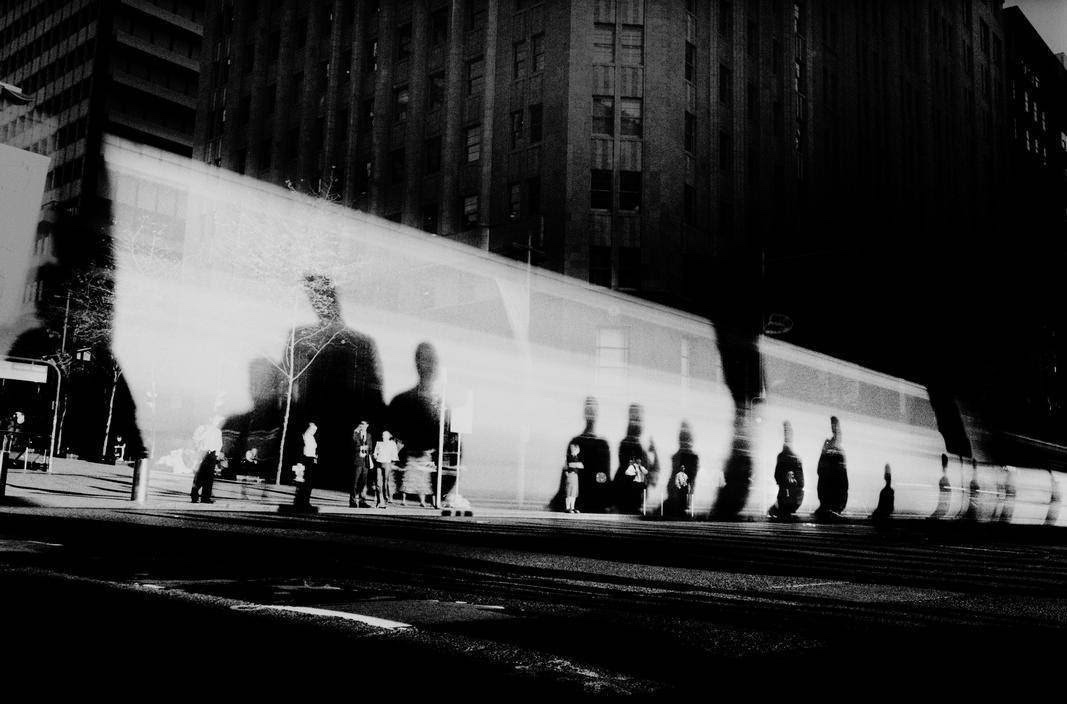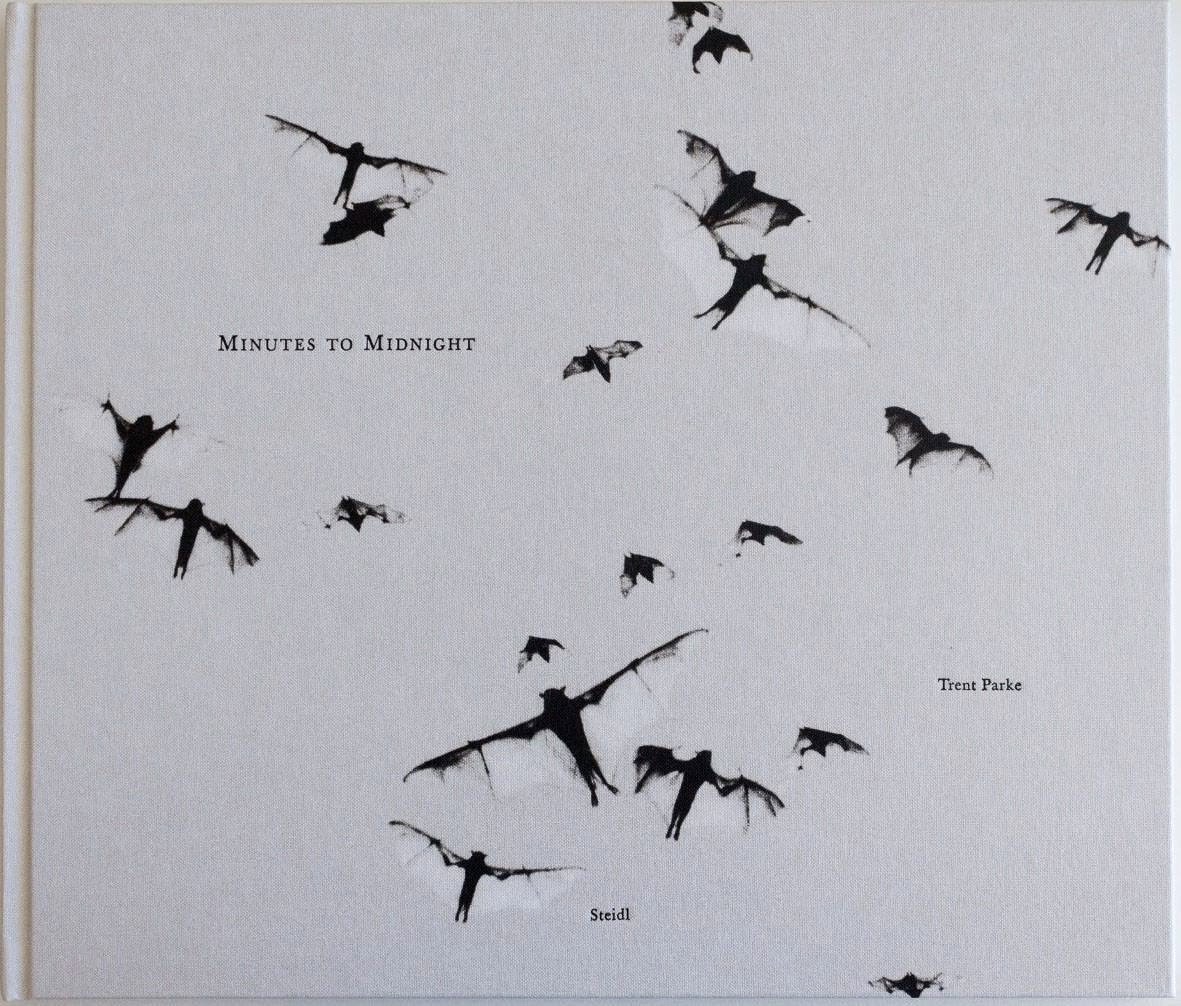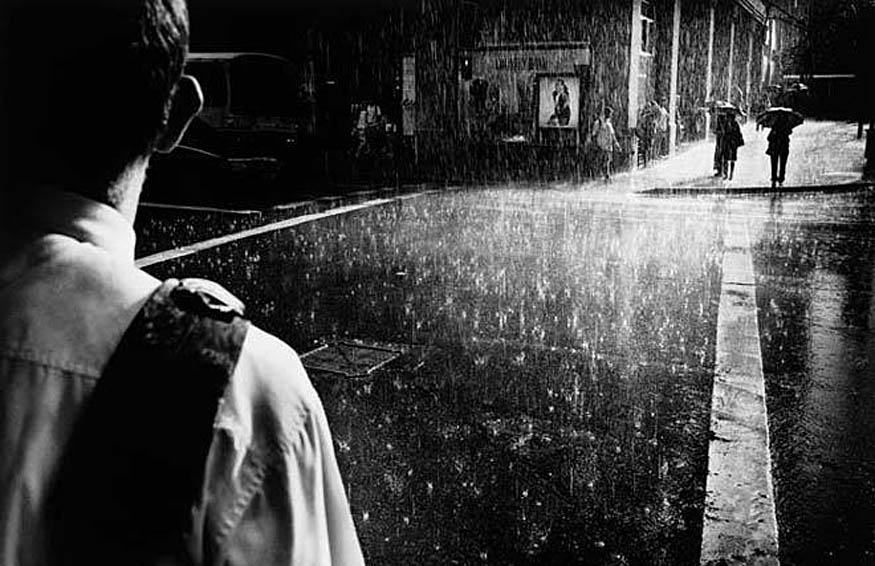For this review of Minutes to Midnight by Trent Parke (2013), I’ll be using the index created here. In a previous blog post I talked about the stylistic and technical aspects of the work, where the filmic qualities and the chance a film process introduces are paramount. This review is just my interpretation of the book, and no doubt won’t be the last, but just one voice in a really, really long conversation.
The work starts off with a description of a UFO sighting. I quote it here at length.
—- start of excerpt —-
Witnesses reported watching a ball of light move across the sky
For up to five minutes at about 5.50 am Saturday.
“It was a perfect spiral of light,” one Redcliffe witness told The Sunday Mail
“I realized soon it was not the moon but that it was shooting like a comet from the southern sky and off into the northwest.”
Another Brisbane resident said: “There was absolutely no sound in a perfectly clear, darkened sky before dawn.”
The weather bureau said there were no weather conditions which would explain the light.
A defense spokeswoman also said she had no explanation.
The sunday Mail. June 5th 2010. Queensland, Australia
—- end of excerpt —-
As I ponder this and turn to the first picture (1) which is of moths to light, I stare it at for a bit. The photo now seems to resemble an alien planet. Photos 2 & 3 just seem like a capture of amusements, but then in photo 4 we get a bit of long exposure. I feel like the aliens have arrived.
Photos 5 through 14 are scenes of life in the Outback, or the rougher parts of Australia. Photos 15 through 21 seem to be taken in Sydney and its environs.
Photo 22 is an homage to Robert Frank’s photo of the same: a car covered in a white tarp, except the atmosphere feels very Ridley Scott Prometheus.
Photos 23 and 24 are night scenes that seem to harbinger more alien action in later photos.
Photo 25 seems is a car turning up dust. Is it an escape from the aliens?
Photos 26 to 29 all seem to suggest some sort of alien visitation.
Photo 30 is the child hurt was very visceral.
Photos 31-43 seem to have life under the aliens tropes.
Photo 44 is of the author’s pregnant wife.
Photo 45 is of the author’s new born son.
Photo 46 seems to suggest a future family life with the aliens.
Photo 47 seems to suggest that the aliens have left.
I can’t help but conclude that Trent Parke told a tale of fiction using completely straight photos, but like any art, this work has its own kind of truth.
When I saw the squalor that the aborigines were living in in the beginning I couldn’t help but feel a retched sort of optimism. Human beings have survived all sorts of invasions of each other. Shouldn’t they be able to survive an alien one?
 Grain occurs when a film is pushed or under exposed.
Grain occurs when a film is pushed or under exposed.

